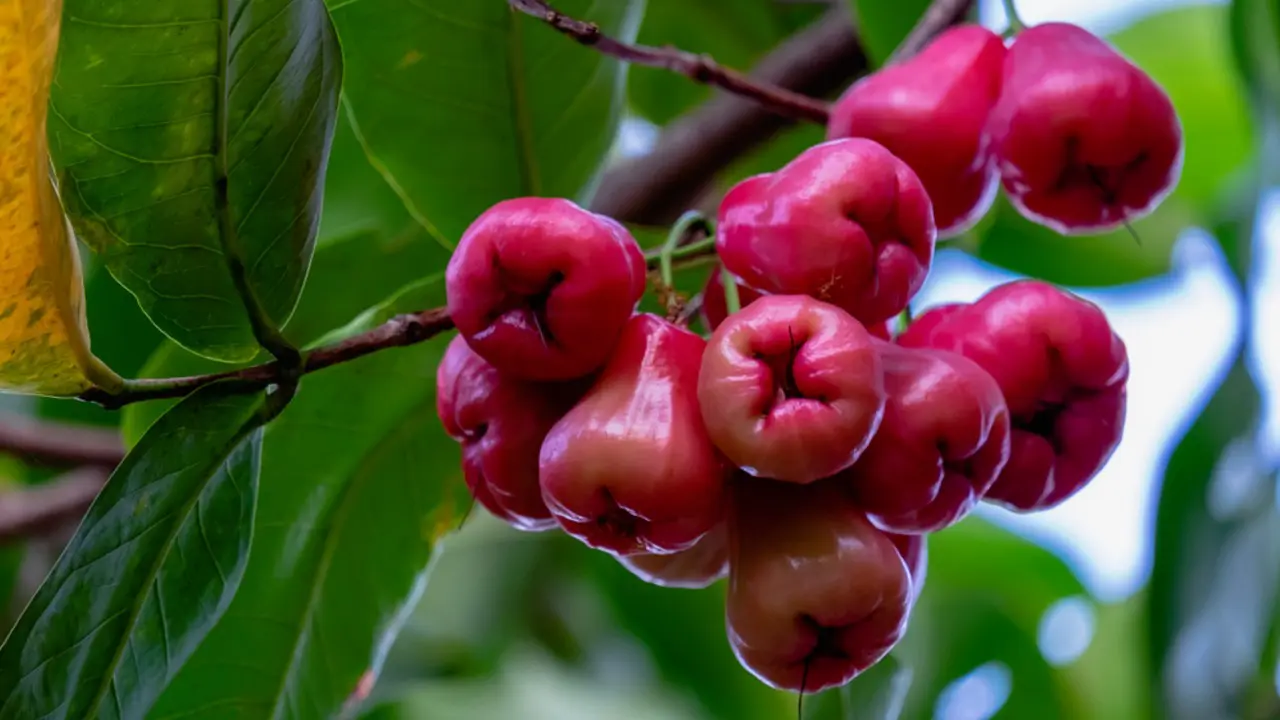
Rose apple or commonly known as Chambakka is everyone’s favourite fruit. Climbing on trees and plucking chambakka is everyone’s childhood nostalgia. Not only children even adults love eating this fruit especially with salt and chilly powder. It’s Chambakka season and you would even love a chambakka wine just like the way you love this fruit.
- Prep. time – 30 mins
- Cook time – 15 mins
- Passive time – 21 days
- servings – 2 litres
Ingredients:
- Rose apple/Chambakka – 1kg
- Water – 1 litre
- Yeast – 1/2 tsp
- Sugar – 1 kg
- Rock sugar/ Kalkandam – 250 gm
Direction:
- Boil the water and keep it aside to cool down.
- Wash the rose apples/ chambakka in clean water. Spread them on a dry and clean cloth for some time to get perfectly dried.
- After drying, cut them into half and remove the seeds.
- Put these pieces, sugar, yeast and water into a big clean sterilized Bharani / ceramic jar. Add 1kg of sugar. Cover the lid with a cloth and tie it with a string.
- Stir this mixture every day using a wooden spatula/spoon. After 11 days add 250 gm of rock sugar to this wine and mix it well until the sugar dissolves. Keep it untouched for 11 more days.
- On the 21st day open and strain it using a muslin cloth into a clean vessel. Do not squeeze the sediments.
- Now pour it into clean dried bottles and Rose apple wine is ready to be used.
A word of caution:
- Sterilize –always wash all the utensils and bottles to be used with soap first then wash again with hot water. Thoroughly dry the bottles and lids under the sun to avoid moisture.
- Never fill the jar till the top as the wine’s quantity increases with fermentation. Fill only till 3/4th of the jar.
- The strength of wine becomes higher if the quantity of water is reduced. As the wine matures it gets really strong.
- The wine can be played around with sweetness, it can be increased or decreased depending on your need.
- Always store the wine for fermenting in a cool dark place (not fridge). If you live in a hot place then store it in the kitchen cabinet away from any heat source. If you live in a cold place then store it near the cabinet closest to the oven. You can keep it in a fridge after the wine is fully prepared.
- You may see a few bubbles and froth on the sides of the bottle which is fine but before using, check if there is any bacteria layer formed on the top and also the taste. It should be sweet with a nice fruity smell. If it tastes sour and smells like vinegar, then you have gone wrong somewhere and you cannot do anything other than throwing it away.
- Always keep in mind that a wine that has turned sour cannot be saved!!
Happy winning!!


